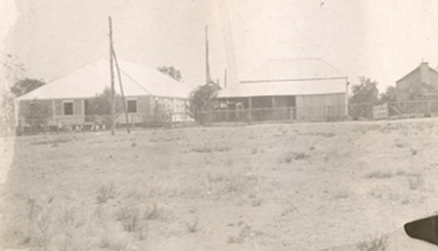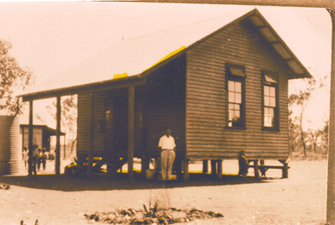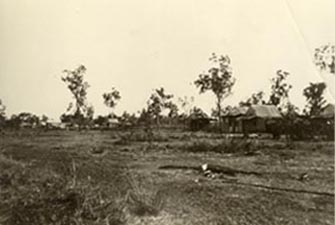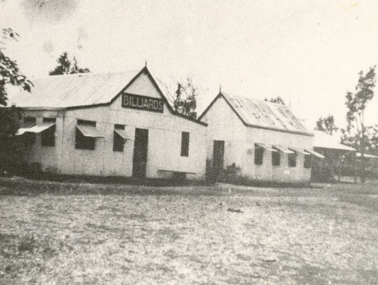The Three Townships of Katherine
The Kath-rhyne 1
The original settlement of Katherine was known by its river (usually pronounced Kath – rhyne) and perched on its south bank at the ford now known as Knott’s Crossing. As early as 1870, when the first Overland Telegraph people arrived, there was a shack at the crossing belonging to Barney Murphy.
In 1872, the Overland Telegraph Line and Telegraph Station were established, and the population increased. A Post Office was opened at the station in 1883. By 1888 Barney Murphy had expanded his business to become the pioneer Cash Store and the licensed Sportsman’s Hotel.
Katherine Township 2
Katherine Moves Yet Again – Township 3
The year was 1926 and once again Katherine was on the move this time from Emungalan on the north bank across the newly opened railway bridge to the south bank. On this site, the new town of Katherine had been planned and shops, hotels and residents moved in masses.
With the construction of the new railway station and facilities and the increased use of aeroplanes, Katherine became an important centre in a transportation network.
By 1930, the town was striving, but the depression was not far off. Soon the economy slumped, jobs became scarce and people moved on. The school was even forced to close for lack of students. Katherine remained in the economic doldrums until it was given new purpose and life ironically, by World War 2.
Telegraph Station

Emungalan School

Township of Emungalan

Emungalan Township

The First Township of Katherine

Katherine Today
Katherine is an attractive modern town situated by the permanent waters of the Katherine River, 300 km down the Stuart Highway from Darwin.
Traditionally it has been the service town for the large pastoral properties if the “Top End”. Cattle raising and horse breeding have long been important industries of the area. More recently Katherine has also become an important agricultural center for both cropping and market gardening.
Tourism has rapidly increased and is today Katherine’s largest industry. The main tourist attractions are the Katherine Gorge National Park (Nitmiluk), Cutta Cutta limestone Caves, Springvale Homestead and the Low Level reserve.
Other attractions of the region include the thermal springs and other features of Mataranka, the Elsey Cemetery, both south of Katherine, and the Edith Falls, north of Katherine.
The climate of Katherine is monsoonal with a short ‘Wet ‘ season from December to April, and a long ‘Dry ‘ season from May to November. Annual temperatures are quite high, the average maximum being 34.2 deg .C and the average minimum 20.3 deg. C.
The Naming of Katherine
Explorer John McDouall Stuart passed through the region in 1862 and named the river ‘Katherine’ after the daughter of his sponsor, James Chambers. Her name was actually spelt with a ‘C’. It was never changed.
Our Traditional Owners
The first people to inhabit the Katherine region were the Jawoyn, Dogamen, Walpiri and Wardaman Indigenous people. Nitmiluk Gorge was formally handed to the Jawoyn on the 10th of September 1989.
For further information click here.
Additional Information about Katherine
Select from the options below to view more:
Katherine Visitors Centre www.visitkatherine.com.au
Katherine Town Council www.ktc.nt.gov.au/Contact-Us




